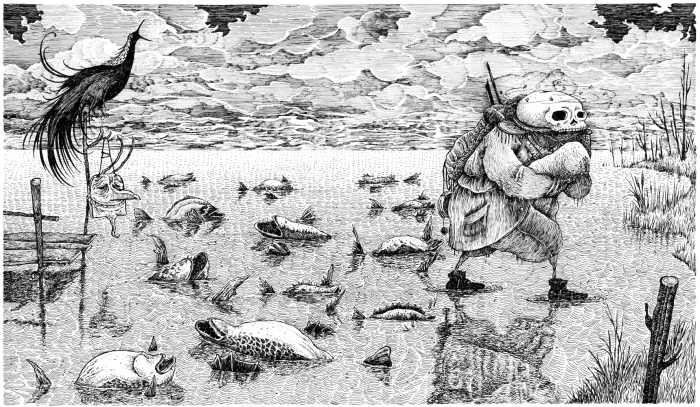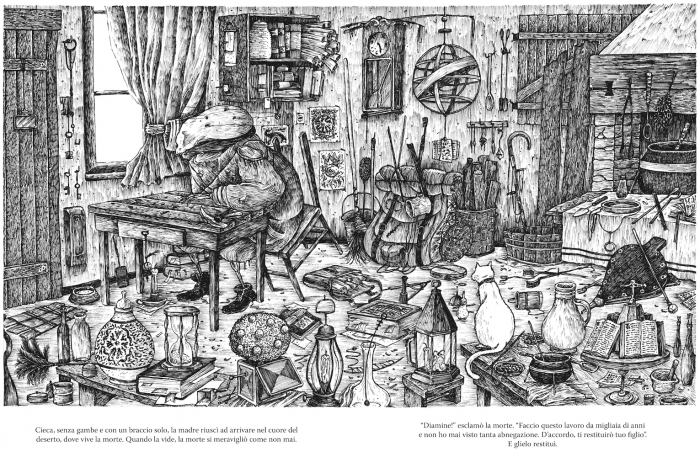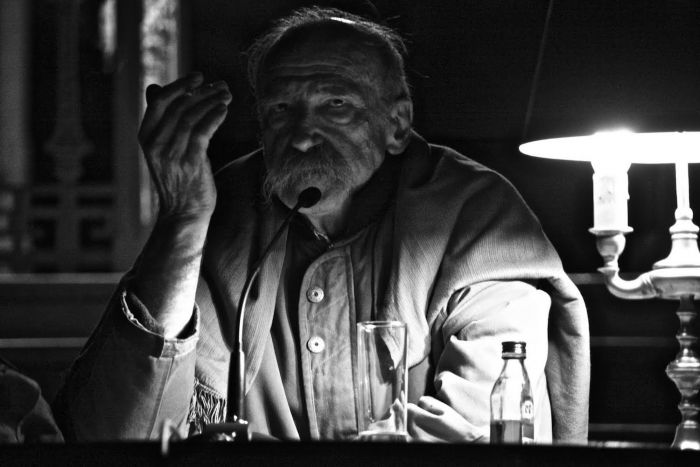THE GENESIS OF LA MADRE E LA MORTE
The story of La madre e la morte (The mother and death) begins with... I’m an avid reader of Alberto Laiseca’s works (Rosario, 11th of February 1941 – Buenos Aires, 22nd of December 2016). He is one of the most important writers of Argentina; he recently died, he was quite old and a bit ill… it’s been a sad loss. Laiseca is not considered a best seller author, but he’s highly regarded among the literary circles; he’s been the teacher of many young contemporary writers, who attended his workshops. He is not well-known, nonetheless he had an enormous impact on our national literature. And I’m an absolute fan, I will not start talking about him because I’m not impartial; I can only say that every single book he has written is amazing and you should buy all of them. All the more, Laiseca was also a great storyteller, he hosted a TV programme called Cuentos de Terror, focused on the narration of horror stories, and his looks, with his long walrus moustache, reflected his interesting personality. Laiseca organised various storytelling events in different locations and, since we had developed a strong obsession, my wife and I used to attend all of them, so here’s what happened: one night we went to see him in a dump place in the centre of Buenos Aires, a place de mala muerte that risked to fall apart, and in that occasion he narrated the story of La madre e la morte. I was deeply upset and continued to think about it until I decided that I was going to turn it into a book. Three or four years before, I had shown my fanzine to Laiseca and pointed out that, according to me, some of his stories would have been perfect for a children picture book. But his answer had been: NO, a clear no, he wasn’t interested, he wasn’t a writer of children literature, no way, thank you for the offer. But I can be really stubborn and when I listened to La madre e la morte that night I knew that it was a suitable story…
Laiseca had never written down his words, which were inspired by Andersen’s fairy tales, with the addition of a personal twist, therefore I looked for a written version and I found a low quality youtube video which featured Laiseca’s narration. I transcribed and revisited it, then presented the text to the author, asking for his permission to use it. He generously said YES. I worked on this story for three years, then submitted it to his approval and he liked it. Since I had collaborated with the Fondo de Cultura in the past, I proposed the story to them and they accepted it. However, they also asked me to illustrate a story written by the Mexican author Alberto Chimal, La perdita, in which the same theme was analysed from a different point of view. I hesitated at first, but after reading Chinal’s story I changed my mind, this could work after all… another year of work passed by.
The creation of this book took me a long time due to the high number of quotations and iconographic references; each page is decorated with elements imported from other art pieces. Collecting all material, reading other books, stories, essays focused on the theme of death, for example, took me a long time, especially because this research phase was particularly interesting and I decided not to rush it. Each page stores a number of pictures, elements and sketches.
The death of a son is not a politically correct theme, and this aspect fascinated me the most on an intellectual and visual level. This topic is almost unthinkable. How can we cope with the death of a son? The void is unbearable and both stories wonderfully interpret it. The proposal was risky for us, and for the Mexican publisher as well, but we had been right all along: here in Argentina, and in Mexico, the public loves the book, which is going strong!
I’m convinced that there is a growing desire to approach this kind of topics.
- Nicolás, via skype, January 2017
Nicolás studied Fine Arts and received a traditional artistic education. He entered the artistic world with his black and white drawings, but feeling uncomfortable in the official environment of art galleries, he decided to become an illustrator, since he preferred to feature in books and appreciated their potential as distributors of art. At first, he began illustrating comics and books written by other authors, until 2005, when he published his first complete work, in which the aesthetics of La madre e la morte were already present. He still features in several galleries, but only as an illustrator. With reference to a government programme which involves socially and economically fragile areas, he works with a group of young people on an artistic and literacy project throughout the whole year, for three consecutive years. Among his production, we also find various cartoon illustrations for animated movies. He lives in Buenos Aires, Argentina.
“I’ve found my place in the comic and book format, and I don’t need anything else for now”.
N.A.
LA MADRE E LA MORTE
by Nicolás Arispe
text by Alberto Laiseca
LA PERDITA
by Nicolás Arispe
text by Alberto Chimal
hardcover, 56 pages, 192x250 mm
#logosedizioni
ISBN: 9788857608266



